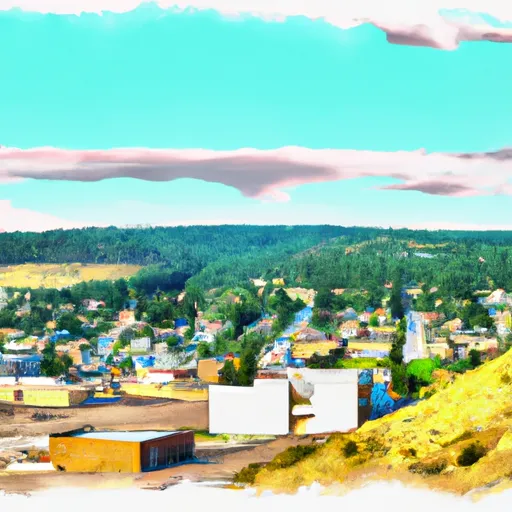-
 Snoflo Premium
Snoflo Premium
Get unlimited access to all our content
With no Ad interruptions! - Start Your Free Trial Login with existing account
Larslan
Eden Index
Climate
5.8
•
Recreation
•
Community
•
Safeguard
2.3/10

Larslan, Montana is a small town located in Valley County in the northeastern part of the state. The climate in Larslan is classified as semi-arid, with hot summers and cold winters. Summers are relatively short, with temperatures averaging in the 70s to low 80s Fahrenheit, while winters can be harsh, with temperatures dropping below freezing, and occasional snowfall.
Hydrologically, Larslan benefits from the nearby Missouri River, which provides water resources for the town and its surrounding areas. The river also offers opportunities for fishing, boating, and water-based outdoor activities.
Outdoor recreation opportunities in Larslan are abundant. The surrounding landscape features vast grasslands, rolling hills, and scenic views, making it ideal for hiking, camping, and nature exploration. Additionally, the area is renowned for its hunting opportunities, with game species such as deer, elk, and upland birds attracting hunters. Fishing enthusiasts can also enjoy angling for various species in nearby lakes and rivers, including the Missouri River.
In summary, Larslan, Montana offers a semi-arid climate, access to water resources from the Missouri River, and a variety of outdoor recreational opportunities, including hiking, camping, hunting, and fishing.
What is the Eden Index?
The Snoflo Eden Index serves as a comprehensive rating system for regions, evaluating their desirability through a holistic assessment of climate health, outdoor recreation opportunities, and natural disaster risk, acknowledging the profound impact of these factors on livability and well-being.
Climate Health Indicator (CHI): 5.8
Larslan receives approximately
302mm of rain per year,
with humidity levels near 69%
and air temperatures averaging around
5°C.
Larslan has a plant hardyness factor of
3, meaning
plants and agriculture in this region thrive during a short period during spring and early summer. Most
plants will die off during the colder winter months.
By considering the ideal temperature range, reliable water supplies, clean air, and stable seasonal rain or snowpacks, the Climate Health Indicator (CHI) underscores the significance of a healthy climate as the foundation for quality living.
A healthy climate is paramount for ensuring a high quality of life and livability in a region, fostering both physical well-being and environmental harmony. This can be characterized by ideal temperatures, reliable access to water supplies, clean air, and consistent seasonal rain or snowpacks.
Weather Forecast
Streamflow Conditions
Milk
Area Rivers
Milk
Snowpack Depths
Milk
Reservoir Storage Capacity
Milk
Groundwater Levels
Recreational Opportunity Index (ROI):
The Recreational Opportunity Index (ROI) recognizes the value of outdoor recreational options, such as parks, hiking trails, camping sites, and fishing spots, while acknowledging that climate plays a pivotal role in ensuring the comfort and consistency of these experiences.
Access to outdoor recreational opportunities, encompassing activities such as parks, hiking, camping, and fishing, is crucial for overall well-being, and the climate plays a pivotal role in enabling and enhancing these experiences, ensuring that individuals can engage in nature-based activities comfortably and consistently.
Camping Areas
| Campground | Campsites | Reservations | Toilets | Showers | Elevation |
|---|---|---|---|---|---|
| Wood Mountain Regional Park | 94 | 2,883 ft | |||
| Flat Lake- Lake Fort Peck | None | 2,261 ft | |||
| Downstream - Fort Peck Lake | 75 | 2,045 ft | |||
| West End - Lake Fort Peck | None | 2,322 ft | |||
| Floodplain- Lake Fort Peck | None | 2,042 ft |
Catastrophe Safeguard Index (CSI):
The Catastrophe Safeguard Index (CSI) recognizes that natural disaster risk, encompassing floods, fires, hurricanes, and tornadoes, can drastically affect safety and the overall appeal of an area.
The level of natural disaster risk in a region significantly affects safety and the overall livability, with climate change amplifying these risks by potentially increasing the frequency and intensity of events like floods, fires, hurricanes, and tornadoes, thereby posing substantial challenges to community resilience and well-being.
Community Resilience Indicator (CRI):
The Community Resilience Indicator (CRI) recognizes that education, healthcare, and socioeconomics are crucial to the well-being of a region. The CRI acknowledges the profound impact of these elements on residents' overall quality of life. By evaluating educational resources, healthcare accessibility, and economic inclusivity, the index captures the essential aspects that contribute to a thriving community, fostering resident satisfaction, equity, and social cohesion.

